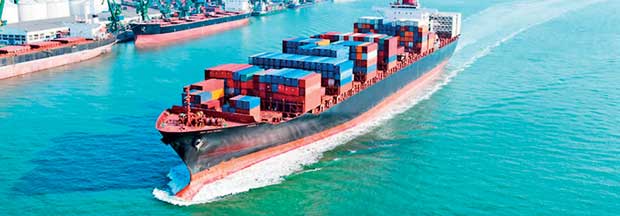Reply To:
Name - Reply Comment

By Vinod Thomas and Marco Gatti
In an increasingly fragile, interconnected world, where humanitarian and development needs are a burden on budgets, cooperation is a buzzword. The scale of the challenges facing humanity, and the scope of ambitions to leave no one behind under the new global development roadmap, have placed collaboration in the spotlight. This holds true for regional development as well as humanitarian initiatives.
But international projects require time and effort, and a nagging question has long been whether all that work is worth the trouble.
In Asia and the Pacific, we have seen more cross-boundary deals on trade, investment and labour. Evidence shows regional cooperation and integration works, strengthening the case for its expansion to projects that address climate change and environmental protection.
Despite being more complicated and taking longer than regular development programmes, these projects are significantly more successful. Our research (pdf) shows that more than 80 percent of Asian Development Bank (ADB) loan and grant projects, approved in 2003-14 and supporting regional cooperation and integration, were rated as successful on average by the independent evaluation department, which assesses the bank’s operations. This compares with a 61 percent success rate for all projects.
Success rates are not the whole story, however. Some evidence suggests that the greater impact from regional projects often outweighs their additional costs in coordination and agreements.
Untapped potential
Countries in Asia and the Pacific have substantial untapped potential to expand regional cooperation and integration, and south-east Asia is already making excellent progress. Economic cooperation programmes in the Greater Mekong subregion are enabling closer collaboration among countries around the Mekong river basin – Cambodia, Laos, Myanmar, Thailand, Vietnam and Yunnan province, China. Such programmes have helped improve tourism and services in south-east Asia and south Asia, creating more local jobs and foreign exchange earnings.
For example, the expansion of the Gautam Buddha international airport, near Bhairahawa in southern Nepal, should increase tourism.
A recent ADB study found substantial untapped potential for further increases in Asian integration levels; indeed, the region lags behind parts of the world where integration has advanced into economic, monetary and customs unions.
Least integrated
Parts of the Pacific, South Asia and Central Asia remain among the least integrated subregions. An important challenge is to broaden support for regional cooperation and integration beyond infrastructure, which tends to dominate cross-boundary projects.
Infrastructure collaboration must continue of course, but partnerships over natural resources in particular – trans-boundary air and water pollution control, and management of biodiversity, forestry and fisheries – deserve far greater support from multilateral development banks.
In these areas, ADB investments have included projects to preserve marine ecosystems in the coral triangle (Malaysia, Papua New Guinea, the Philippines, the Solomon Islands and Timor-Leste), and biodiversity management projects in the Greater Mekong subregion. These activities ought to be expanded and replicated in other subregions facing the same natural resource constraints.
Collaboration should also be broadened to assist countries that have benefited less from regional work, such as Georgia. It is one of just three countries, alongside Armenia and Timor-Leste, not covered by one or more ADB regional cooperation and integration programmes. Yet it is geographically and strategically positioned to play a more important role in enhancing regional links in the Caucasus and between Europe and central Asia.
Similarly, Myanmar can play a stronger role in regional cooperation between south-east and south Asia. The ADB recently approved a loan to extend the Greater Mekong subregion east-west corridor connecting Laos, Thailand and Vietnam through border crossings at Lao Bao/Dan Savanh and Savannakhet into Myanmar.
Tapping skills in local coastal communities
Coordination of multilateral actions under greater regional cooperation can help mitigate adverse climate impacts. Risk-sharing mechanisms such as insurance, and national, regional and global risk pools can increase resilience to climate extremes.
The ADB’s project to develop a disaster risk financing capability in the Pacific, for example, is tapping skills in local coastal communities and enhancing the capabilities of national and local institutions to manage ecosystems and build resilience to climate change.
Regional cooperation and integration have also been shown to help reduce poverty and worrisome inequality as Asia’s countries rise from low- to middle-income status. Development organisations have had some success in encouraging regional cooperation and integration, but they need to press their advantages to widen and deepen these gains.
(Vinod Thomas is director general of independent evaluation at the Asian Development Bank; Marco Gatti is principal evaluation specialist at independent evaluation)